Creating "Future Proof" Solar
By Andrew Williams, Contributor
6 january 2011.
Will solar panels be able to self-replicate? Will power electronics make it easy to swap in more efficient panels? Here's a look at some big ideas for the future of solar energy.
London, UK -- Desertification and land degradation caused by climate change may be "the greatest environmental challenge of our time" and a "threat to global well being," according to some experts but it looks as if deserts can help the planet too.
At least that’s the theory of the University of Tokyo researchers behind the Sahara Solar Breeder project, an initiative that aims to produce a staggering 50 percent of the planet's electricity with sun and sand by 2050 and create a “paradigm shift” in the world’s energy system by distributing solar energy through a superconducting supergrid.
The project, due to start this year, will construct manufacturing plants around the desert that extract silica from sand to make solar panels, which will then be used to build solar power plants in the desert. The idea is that power generated by the first wave of plants would be used to “breed” more silicon manufacturing and solar energy plants, which would in turn be used to breed yet more in a “self-replicating” system.
“If we can use desert sand to make a substance that provides energy, this will be the key to solving the energy problem. This is probably do-able,” says project leader Professor Hideomi Koinuma of the University of Tokyo.
The initiative is funded by Japan’s Ministry of Education, Culture, Sports, Science and Technology (JST) and the Japan International Cooperation Agency (JICA) under the auspices of the International Research Project on Global Issues, which will fund the project to the tune of 100 million Yen ($1.2 million USD) annually for five years.
However, the team, (made up of researchers from several universities, including Tokyo University, the National Institute for Materials Science, Hirosaki University, Tokyo Institute of Technology, Chubu University and the Universite des Sciences et de la Technologie d’Oran in Algeria) admit that even that large sum of money won’t be enough to complete the project. Instead, the key aim of this initial five-year phase will be to demonstrate the possibility of manufacturing high quality silicon from desert sand and of building a high-temperature superconducting long-distance DC power supply system.
“The goal of the research will [also] be to obtain data on issues such as how deep the superconducting pipeline must be buried to minimize temperature fluctuations,” says Koinuma. However, while agreeing that a supergrid of this type is technically possible, some observers argue that it goes against the grain of current industry thinking regarding distributed energy systems.
“Yes, we will power 50% of our electricity globally with solar by 2050 easily. But the trend is toward distributed, not ever more centralized, generation,” says Jigar Shah, Founder of SunEdison and CEO of the Carbon War Room.
“This plant will be built in the deserts around the world, not in just one. Each continent has rooftops, excess land areas, buffer land, deserts, etc. All of these areas will be exploited for solar production,” he adds.
Critics are also dubious of the chances of such a grand undertaking being completed soon enough to mitigate the damaging effects of climate change.
“Superconductor lines for long distances are not available now and, as the [project team members] say, may need about 20 years to become commercial,” says Hani Nokraschy, Co-Founder and Vice Chairman of the Supervisory Board of the Sahara-based Desertec Foundation, which itself hopes to generate 15 percent of Europe's electricity by 2050 using solar plants in the region.
“Climate change is not waiting for it. We have to act now with available proven technologies, including large array PV fields,” he adds.
“Future Proof” Solar
The novel technological approach suggested by the Sahara “Breeder” team is not the only one under consideration by solar industry stakeholders as they seek to shape the development of the sector over the next half century. With today’s crystalline solar panels expected to last around 50 years, a key challenge for many companies lies in developing an understanding of how they can operate plants in such a way that every solar panel continues to produce the maximum amount of energy possible in the midst of repairs and replacements.
“This is important because the O&M reserve being set aside for the profitability of solar plants includes the capital replacement costs, but assumes the plant will continue to operate through the maintenance,” says Shah.
One possible solution is to use power electronic systems, which enable maximum peak power tracking (MPPT) of modules at the module level. This means that every single module can dynamically change its voltage and amperage to get the highest possible power output – so that when one module gets dirty, it doesn’t affect the production of all the other modules. Some of these technologies can even power track between cells within a single module.
“Even if some modules fail in fifty years, with DC-DC chips you can just leave them out there and it won’t affect the performance. Just replace them with the newest module available on the market,” says Shah.
“On DC-DC chips, you are seeing eight or more companies vying for the top slot and all are in advanced testing with manufacturers to be included in [the] junction box. This allows for very low cost module-to-module ‘maxpeak’ power tracking as well as data collection. In the future, these chips also allow for mismatched modules to be put next to each other without any performance degradation. For example, a 180W panel could be replaced with a 240W panel,” he adds.
Free and Easy?
So, looking into the future, will there ever be a time when solar energy like the type produced by the Sahara Solar Breeder project will be practically free?
“No, never,” says Shah. “Solar will always cost something upfront. The technologies promising very low upfront costs will always have a diffusion problem.”
However, Shah does predict that solar will reach grid-parity with around 50% of electricity sold globally by 2020 – a significant improvement on today’s figure of around 10%.
“After 20 years, the variable cost of solar PV will be less than $0.01/kWh, which will make [it] seem free, just like nuclear today. You will see big announcements from the middle east pursuing this model in the next 18 months,” he adds.
Fonte: Renewable Energy World








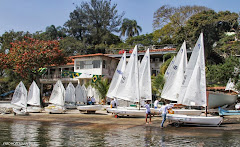




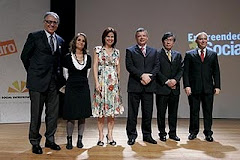
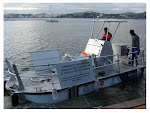

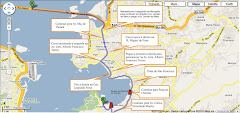
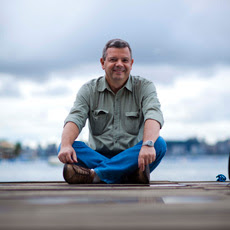

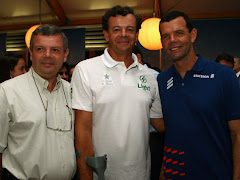




ih nao entendi lhufas.
ResponderExcluireu não entendi nada mais eu queria está lá
ResponderExcluir